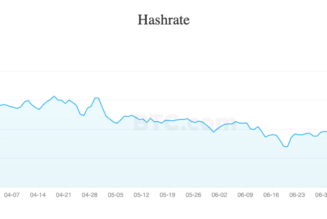
His charitable organization, the Bill and Melinda Gates Foundation, is one of the world’s richest, and he’s long linked its goal of improving global health and fighting poverty with climate change. And to help drive the needed technological discoveries, he’s assembled a roster of thinkers to guide his Breakthrough Energy Ventures fund, from Amazon’s Jeff Bezos and clean tech investor Vinod Khosla to hedge fund guru Ray Dalio.
A central theme of Gates’ new book is the concept of a “green premium,” the cost difference between a product that emits carbon and its alternative that does not. Too often, policymakers and activists focus on small measures that may help reduce energy emissions, such as programs to weatherize homes or help renewables displace coal — but those, he says, won’t get the planet anywhere near zero emissions.
What’s really needed, Gates maintains, is a sharp ramp-up in research and development spending by the federal government to figure out the big stuff: eliminating the carbon footprint of things like steel, concrete, aviation and farming, where little progress has been made, so that manufacturing and agriculture can continue to thrive in a net-zero world.
This transcript has been edited for length and clarity.
You had been warning about the potential for a pandemic for years, yet here we are. And you similarly have been vocal about climate change for over a decade now. So, has the pandemic response affected your thinking about our policies to eliminate greenhouse gas emissions?
There’s always a danger that people think climate is easy to solve. With acid rain, it was actually pretty easy to solve with sulfur scrubbers. The ozone layer was actually pretty easy to solve, where industry came up with a different way of doing refrigerants. And, the pandemic — even though it’s tragic that we didn’t do the right things in advance, which would have cut the death toll to less than a quarter of what it was — at least here, there’s this invention of a vaccine that allows us to say that as this year progresses, by and large, this crisis will end.
In climate change you can’t wait until it hits, and it’s not one innovation. So, I think the pandemic is very helpful in some ways, because it reminds us that government on our behalf should have experts who are looking ahead, and listening to the various warnings and deciding which [plans] we should invest in. … The climate thing has been [around] a long time. Because of the sources of emission and the global nature of it, I think it’s harder.
But the fact that people didn’t lose interest during the last year is kind of amazing because there’s a tendency to become very short term when you have such a crisis. And yet, in the U.S. politically, in Europe politically, there’s more energy behind climate than ever.
You touch on the book “Energy and Civilization” by Vaclav Smil, which details how critical energy is to modern civilization, but as you mention, it shows how slowly energy transitions occur. Scientists say we need a rapid transition away from fossil fuels. Do those same old energy rules from past decades and centuries apply?
There’s no possibility of getting rid of fossil fuels in 10 years. That’s anti-reality as much as denying that there is such a thing as a climate crisis. I mean, just do the numbers. Are you going to stop making cement? Are you going to stop making steel?
To do this by 2050 would be a miracle. Now, miracles do happen. Personal computing, the internet, mobile phones — those are miracles. I have been allowed to participate in some parts of that.
Likewise, the fact that we cut childhood deaths in half between the year 2000 and 2015, cut it from over 10 million a year to 5 million a year. That was a miracle, and the [Gates] Foundation had a chance to be part of that. The coronavirus vaccine in less than a year. That’s a miracle. But the climate requires a lot of miracles at a scale that none of those other problems come even close to.
In your book you make the point that making reductions the wrong way by 2030 could prevent us from actually from ever getting to zero. Could you break that down?
The whole idea that various countries are competing in near-term reductions means that all you talk about are the areas of emissions that have very low “green premiums.” The two things with the lowest green premium today are passenger cars and electricity generation. … If you look at the progress the world has made, and say you leave out the reduction you get from switching from coal to natural gas, it’s mostly passenger cars and solar and wind. That doesn’t scale to zero. First of all, you get gigantic reliability problems once you get past 60 percent or 70 percent of the generation, particularly if you’re not building continental-scale [power] transmission.
Between those, you don’t even account for a third of all emissions. The other two-thirds, the high green premium stuff — it’s truly embarrassing how little is going on in terms of clean steel or clean cement, or even clean aviation fuel. Those premiums are very, very high.
Even for Breakthrough Energy, finding enough companies [to financially support] in those spaces, we thought we did a great job on [energy] storage, we did a great job actually on the food piece. But in some areas like carbon capture or cheap hydrogen, as we’re doing our second fund … we’ll have a particular priority on those areas where we didn’t find enough crazy companies in the first round.
What is the role of the private sector in driving advances when you’re talking about these green premiums?
Certainly the government sets the framework for everything, and government is the primary funder of R&D. So, we’ve proposed in there that we have an R&D scale that’s over four times what we spend today, including [creating] the National Institute of Energy Innovation, which is sort of like the National Institutes of Health, except focusing on these problems.
I think most people would be surprised how little money the U.S. spends on energy R&D. Even if they’re smart enough to know the Department of Energy budget, they may not realize that three-quarters of that is cleaning up nuclear weapons-related activities, not really energy, even though the name of the department is based on the thing that it spends the minority of its money on.
Those things often don’t encompass much about steel or cement, or meat, because those are more over in Commerce or Ag, and not viewed as deep R&D problems.
When you’re talking about the Energy Department, is the solution to restructure everything or is it simply spending more?
Fortunately, in my view we don’t need trillions. Some of the political discussion [during the Democratic primary] was about, “Oh, I’ve committed to $1.4 trillion,” “I’m committed to $2 trillion,” [or] “I’m committed to $3 trillion.” If we really needed that, that’s what I call sort of a brute force solution, to deal with our 14 percent. It wouldn’t be scalable to the world. But if you can’t solve this problem for the world, it’s not worth solving at all.
The U.S. is unique in that we’ve got the majority of the innovation skills on the planet. Models that we have like DARPA or NIH, or, although at a very small scale, ARPA-E — we have to step up and do those in a bigger way. And so even doing the R&D budget up at say, $24 billion a year, which would be four times the current spend, it gets it up to say two-thirds of NIH levels of spending.
That and taking the various policies, including the tax credits that we’ve used for solar and wind, and maybe doubling or tripling those — but shifting them away from today’s solar and wind to the offshore wind and storage and nuclear, and a variety of things that are early in the learning curve. Yes, I think that there are policies that are in the tens of billions of cost that the U.S. can do … to help solve this problem for the entire world.
You mentioned wanting to see the results of the 2020 election ahead of writing this book. What do you make of Joe Biden’s clean energy plan, which calls for spending $2 trillion over his four-year term?
There’s no way that that scale of money would be likely to be found, or would even be that impactful. Because you’d be doing a lot of brute force — insulation or subsidizing the electric car market — to move five years [faster than] it would just naturally anyway.
So you’d be out there [doing] very modest things like, you can say in a city, “OK, let’s spend tens of billions on one city and we’ll have 15 percent less passenger miles” and say “OK, this is climate related.” But it’s not. Climate is about multiplying things by zero. Reducing things by 15 percent, that’s just using climate as an excuse. Climate is about zero, not about 15 percent less of this or that.
So the only way that transportation works is if cars, buses, trains, planes, boats have been shifted to a totally zero emission thing. In the case of climate … it’s not reducing the level of activity, even though in a rich country you could, in some cases, reduce the size of our houses or how big our cars are, you could reduce that quite a bit. But the money needs to be spent on innovation for the world, not on modest decreases, just here in the United States.
Given that Democrats have only a slim majority in Congress and aren’t likely to win big change despite some of the optimism we’re seeing on climate change, what incremental steps would be most valuable on the Hill?
There is quite a bit of good climate change stuff actually in [the December] stimulus bill, and our team was involved in that stuff. … Keeping the loan program alive, some of the nuclear energy stuff. The stimulus bill is very good. And I didn’t know what we’d get in there related to energy and climate, but there’s quite a bit that got in.
But what I’m saying should be within reason. I’m talking about a fairly substantial R&D increase, I’m talking about a meaningful increase in the tax credits, but modernizing what they aim for. I’m talking about a lot of policy-type things that are not budget related — rejoining the Paris accord.
That’s not so much money that if Biden — with the ability to do reconciliation — makes it one of his top four priorities, it’s very, very doable. Now I’m sure if he goes with the pragmatic, “here’s an extra 20 billion for R&D, here’s an extra 20 billion for tax credits,” there will people who will say, “Hey, where’s the trillions?” So, he’ll get attacked from both sides. I bet almost everything he does will have that characteristic.
He could do what I think is an enabling thing for this 30-year quest. After all, you also have to think that there will be some Republican administrations between now and 2050. So, building a consensus — the tax credits have actually had a fairly good consensus, and as we shift them, I’m talking about scaling them up, [but] not, you know, 10 times.
R&D also creates high-paying jobs, it’s about U.S. competitiveness. If you look at the bipartisan nature of the NIH budget, where the executive branch came in and said let’s cut NIH, and that got into the trash can faster than any executive branch proposal ever did, including in Republican offices. The NIH continued to get reasonable increases. So, [a] National Institute of Energy Innovation I do think can be bipartisan. I think fixing the tax credits, while they’re scaled up somewhat, that can be bipartisan. I don’t know, maybe I’m being naive. I’m willing to disagree with people who say we need trillions so that we can solve it in 10 years.
But, I really do see a path that should fit that is the president’s priority. … I think the Republican Party, if they want to appeal to their young base, is going to have to have climate things. I think the things I’m talking about here are most likely to form the core of things that are seen as a necessary part of that. Hopefully by the time the next Republican administration comes in, it doesn’t come in saying, “Hey, let’s do like Trump and not talk about climate and zero all this stuff out.”
What are some of the technologies right now that you are optimistic about and think need to be scaled up to reduce emissions?
The food area, [Breakthrough Energy Ventures] has got a lot of great companies. So that, versus five years ago, that’s been the most positive surprise for me. Beyond Meat is doing well. Impossible Foods is doing well. But BEV has three or four additional incentives portfolio that will add to that and help create a whole ecosystem. To scale up to compete with physical cows — what are we at? Point-zero-one percent today. We have a long, long ways to go. But that’s pretty promising.
A lot of the [energy] storage ones, like Quidnet — I mean the idea that even works seems crazy. We have great CEOs — the woman who runs Malta, the heat storage thing that was spun out of Google. BEV adds a lot of value not just on the science, but assembling the management team. Form Energy has some super cheap battery stuff that’s about grid storage [that] is unique to that.
I love the BEV 1 portfolio. It doesn’t have enough green hydrogen, direct air capture or steel in it. It has one: It’s got Boston Metal, [which] is a steel-related thing. But we need a lot more in those categories.
The second fund. … It’s the same size as the first fund, just over $1 billion. It will particularly prioritize going into those other areas because the management team there is focused not on making money as their primary measure, but on the climate impact. So that we’re able to say, “build up your capacity and search the entire world for what are novel approaches to direct air capture or green hydrogen.”









